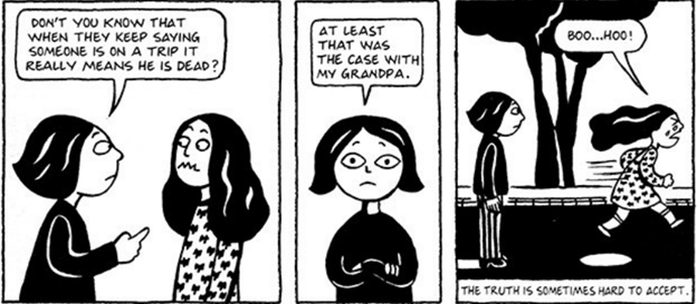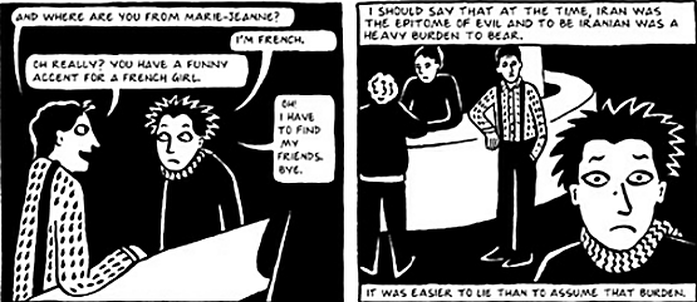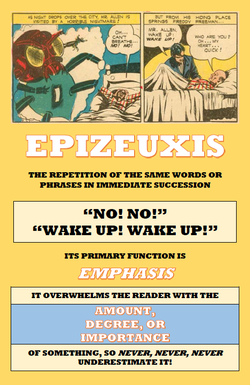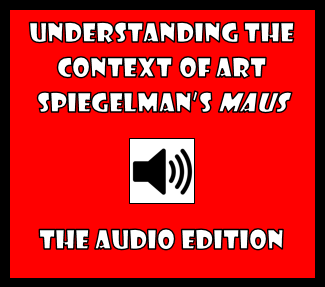The extra-diegetic gaze, which is when a character presented in a photograph, comic, advertisement, film, or other visual medium appears to look out of the frame and often at the reader, is used to great effect in Persepolis. Satrapi’s most frequent use of the extra-diegetic gaze is in creating an emotional connection with the reader in order to deliver a more impactful message. One example of this is on page 48, when Marjane tells another girl named Laly that her father, who is allegedly “on a trip,” is actually dead. Were Marji simply to tell Laly that “on a trip” is synonymous with “dead” in the drawn style of the first frame, the reader would view the whole scene from a somewhat detached, third-person perspective. But when the second frame switches to Laly’s own perspective and Marji looks beyond the frame at the reader, we are now forced to experience the news from the former’s point of view. The direct eye contact and facial expression make the viewer feel part of a real world conversation rather than simply a witness to the one that Satrapi has drawn. This makes for a much more realistic experience of the exchange between the two girls. Satrapi in this instance uses the extra-diegetic gaze to enhance the impact of the scene and to create an emotional connection between the reader and the characters. Another less common use of the extra-diegetic gaze is to isolate a single character from the other characters in a scene. By making the character look outside of the frame, they appear isolated from the people and things within it. In the example above, Marjane lies and says that she is French, not Iranian, in order to avoid discrimination. This causes her to feel guilty and alienated from both the people she lives among and her own culture. This is shown in the second frame, where Marjane looks outside of the panel with an unhappy expression on her face. The extra-diegetic gaze allows us to connect more easily with her guilt and sadness, but it also serves to place her back to the other people in the shot. This creates a clear divide between them, mirroring the isolation Marjane feels. Once more, the extra-diegetic gaze reinforces the ideas and themes Satrapi is exploring. If you plan to cite this article, use the following citation: Lazzam, David. "What Are You Looking At? The Extra-Diegetic Gaze in Marjane Satrapi's Persepolis." Comics in Education, 28 Feb. 2015. Web. If you enjoyed this article you might also enjoy...
0 Comments
Your comment will be posted after it is approved.
Leave a Reply. |
Glen DowneyDr. Glen Downey is an award-winning children's author, educator, and academic from Oakville, Ontario. He works as a children's writer for Rubicon Publishing, a reviewer for PW Comics World, an editor for the Sequart Organization, and serves as the Chair of English and Drama at The York School in Toronto. If you've found this site useful and would like to donate to Comics in Education, we'd really appreciate the support!
Archives
February 2019
|






 RSS Feed
RSS Feed
